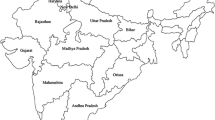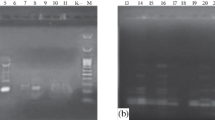Abstract
A set of informative simple sequence repeat markers has been identified for use in the marker-assisted breeding of Beta vulgaris. Highly enriched small insert genomic libraries were constructed, consisting of 1536 clones (with inserts of between 250–900 bp). Screening the clones with CA, CT, CAA, CATA and GATA nucleotide-repeat probes revealed positive hybridisation to over 50% of the clones. Of these 340 were sequenced. Primer pairs were designed for sequences flanking the repeats and, of these, 57 pairs revealed length polymorphism with 12 Beta accessions. Heterozygosity levels of the SSR loci ranged from 0.069 to 0.809. Heterozygosity levels were found to be similar to those detected employing RFLP probes with the same accessions. Phenetic analysis using the markers, indicated relationships in accordance with known pedigrees. Twenty three of the SSR markers were polymorphic in one or both of two F2 mapping populations, and were placed relative to a framework of RFLP probes. The markers are distributed over all nine linkage groups of sugar beet.
Similar content being viewed by others
Author information
Authors and Affiliations
Additional information
Received: 14 July 1999 / Accepted: 27 October 1999
Rights and permissions
About this article
Cite this article
Rae, S., Aldam, C., Dominguez, I. et al. Development and incorporation of microsatellite markers into the linkage map of sugar beet (Beta vulgaris spp.). Theor Appl Genet 100, 1240–1248 (2000). https://doi.org/10.1007/s001220051430
Issue Date:
DOI: https://doi.org/10.1007/s001220051430




